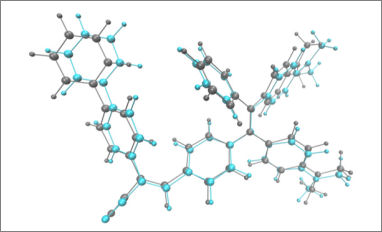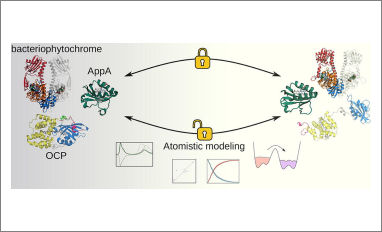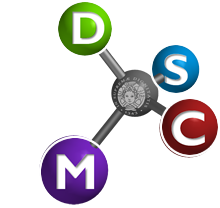
 Congratulations to our Ph.D. student Alberto Picchi for his publication entitled "Luminescent Solar Concentrators from food substances: a safe and simple experiment to approach sunlight energy harvesting" in the Journal of Chemical Education. A simple experiment of edible LSC production employing isomalt and curcumin was developed and described. The suitability of common smartphones in measuring LSC performance for educational purposes was also shown.
Congratulations to our Ph.D. student Alberto Picchi for his publication entitled "Luminescent Solar Concentrators from food substances: a safe and simple experiment to approach sunlight energy harvesting" in the Journal of Chemical Education. A simple experiment of edible LSC production employing isomalt and curcumin was developed and described. The suitability of common smartphones in measuring LSC performance for educational purposes was also shown.
 Congratulations to our Ph.D. student Alberto Picchi for his scientific publication entitled "Effect of polymer composition on the optical properties of a new aggregation-induced emission fluorophore: a combined experimental and computational approach” in Polymers. The optical properties of a new TPE-based AIE fluorophore in copolymers of poly(methyl methacrylate) and poly(cyclohexyl methacrylate) were investigated from both computational and experimental perspectives.
Congratulations to our Ph.D. student Alberto Picchi for his scientific publication entitled "Effect of polymer composition on the optical properties of a new aggregation-induced emission fluorophore: a combined experimental and computational approach” in Polymers. The optical properties of a new TPE-based AIE fluorophore in copolymers of poly(methyl methacrylate) and poly(cyclohexyl methacrylate) were investigated from both computational and experimental perspectives.
 Congratulations to our PhD students Giacomo Salvadori and Patrizia Mazzeo for their publication entitled "Deciphering photoreceptors through atomistic modeling from light absorption to conformational response". In this review, the authors discuss the successes and challenges of the atomistic modeling of photoreceptors. Throughout their presentation, they integrate explanations of the primary methodological approaches, ranging from quantum mechanical descriptions to classical enhanced sampling methods, all while providing illustrative examples of their practical application to specific systems.
Congratulations to our PhD students Giacomo Salvadori and Patrizia Mazzeo for their publication entitled "Deciphering photoreceptors through atomistic modeling from light absorption to conformational response". In this review, the authors discuss the successes and challenges of the atomistic modeling of photoreceptors. Throughout their presentation, they integrate explanations of the primary methodological approaches, ranging from quantum mechanical descriptions to classical enhanced sampling methods, all while providing illustrative examples of their practical application to specific systems.
 Congratulations to our PhD student Elisa Rossi for her contribution to the work "Probing the structural organization of a low temperature transition mixture for CO2 capture through spectroscopic and theoretical studies”. This work focused on understanding the molecular organization of a sorbent made by ethylene glycol, boric acid, and potassium hydroxide, before and after CO2 absorption, combining infrared spectroscopy, differential scanning calorimetry analyses, and computational investigations.
Congratulations to our PhD student Elisa Rossi for her contribution to the work "Probing the structural organization of a low temperature transition mixture for CO2 capture through spectroscopic and theoretical studies”. This work focused on understanding the molecular organization of a sorbent made by ethylene glycol, boric acid, and potassium hydroxide, before and after CO2 absorption, combining infrared spectroscopy, differential scanning calorimetry analyses, and computational investigations.



